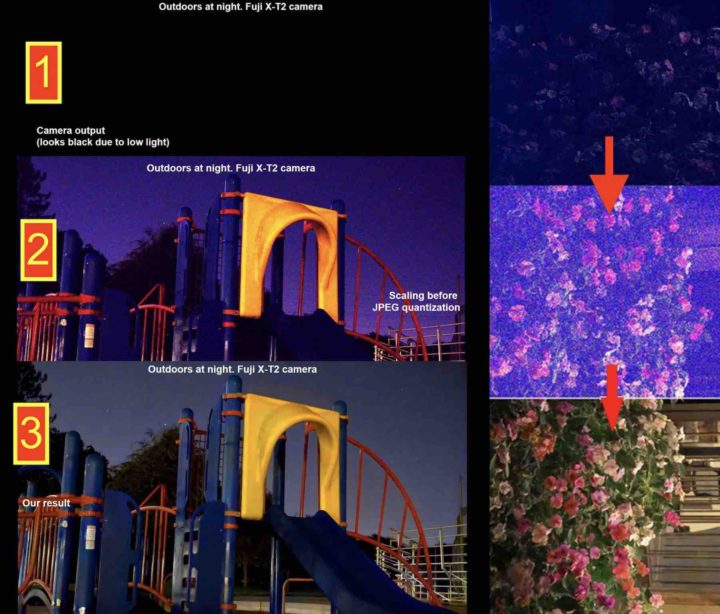Newly Developed AI Image Processing “Sees in the Dark”. See Extreme Fujifilm X-T2 Low Light Recovery

Magic Image Processing?
Image quality is determied mostly by 3 things: sensor, lenses and image processing.
However, we often underestimate the power of image processing.
For sure Fujifilm believes in the power of the imaging processor. In fact, I think to remember Fujifilm saying a few years ago, that the processing engine is responsible for at least 30% of the final image quality.
But this might change one day.
In fact, a team of researchers of the University of Illinois has developed a new image processing technique based on artificial Intelligence that promises to “see in the dark“.
The researchers write:
“Imaging in low light is challenging due to low photon count and low SNR. Short-exposure images suffer from noise, while long exposure can induce blur and is often impractical. A variety of denoising, deblurring, and enhancement techniques have been proposed, but their effectiveness is limited in extreme conditions, such as video-rate imaging at night.
To support the development of learning-based pipelines for low-light image processing, we introduce a dataset of raw short-exposure low-light images, with corresponding long-exposure reference images. Using the presented dataset, we develop a pipeline for processing low-light images, based on end-to-end training of a fully-convolutional network. The network operates directly on raw sensor data and replaces much of the traditional image processing pipeline, which tends to perform poorly on such data. We report promising results on the new dataset, analyze factors that affect performance, and highlight opportunities for future work.”
You can get more information here:
- arxiv.org – Paper
- web.engr.illinois.edu – Samples (including X-T2)
- Chen Chen Youtube Video – Learning to See in the Dark
To demonstrate the power of their AI processing engine, they also recovered pitch black Fujifilm X-T2 images, and since I am kind guy, I will give you the direct link to all X-T2 images recovered with the AI processing engine ;).
NOTE: big files, take time to load. Don’t use your mobile data to open!
- Fujifilm X-T2 – Sample 1
- Fujifilm X-T2 – Sample 1 Adobe Vs. AI Engine
- Fujifilm X-T2 – Sample 2
- Fujifilm X-T2 – Sample 3
- Fujifilm X-T2 – Sample 4
- Fujifilm X-T2 – Sample 5
- Fujifilm X-T2 – Sample 6
- Fujifilm X-T2 – Sample 7
- Fujifilm X-T2 – Sample 8
The full set of images includes X-T2, A7SII and iPhone 6+ images and can be seen at web.engr.illinois.edu.
Of course this is potentially a game changer for low light photography.
More reports at gizmodo and Petapixel
via boingboing via gigazine via digicame-info

